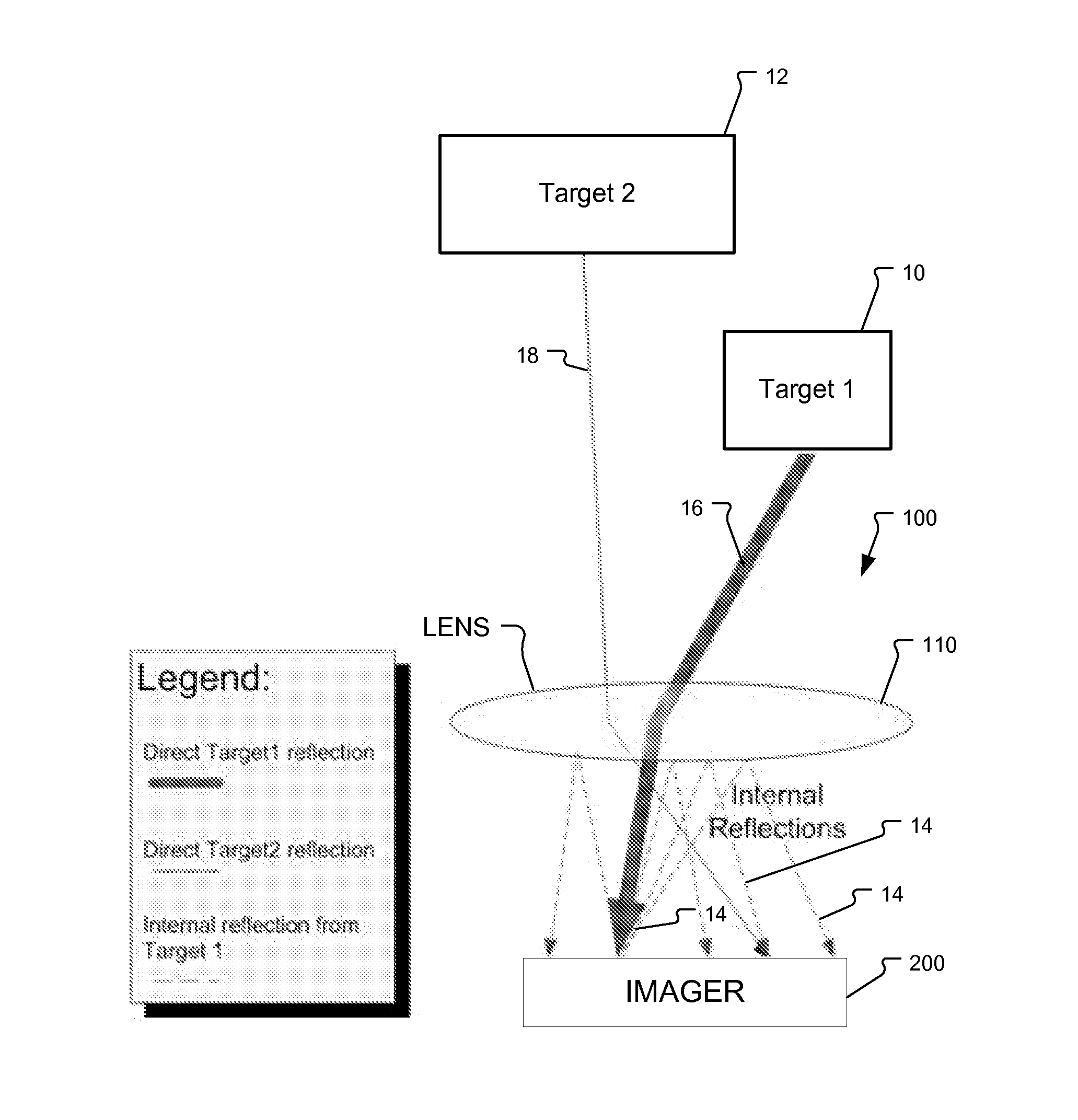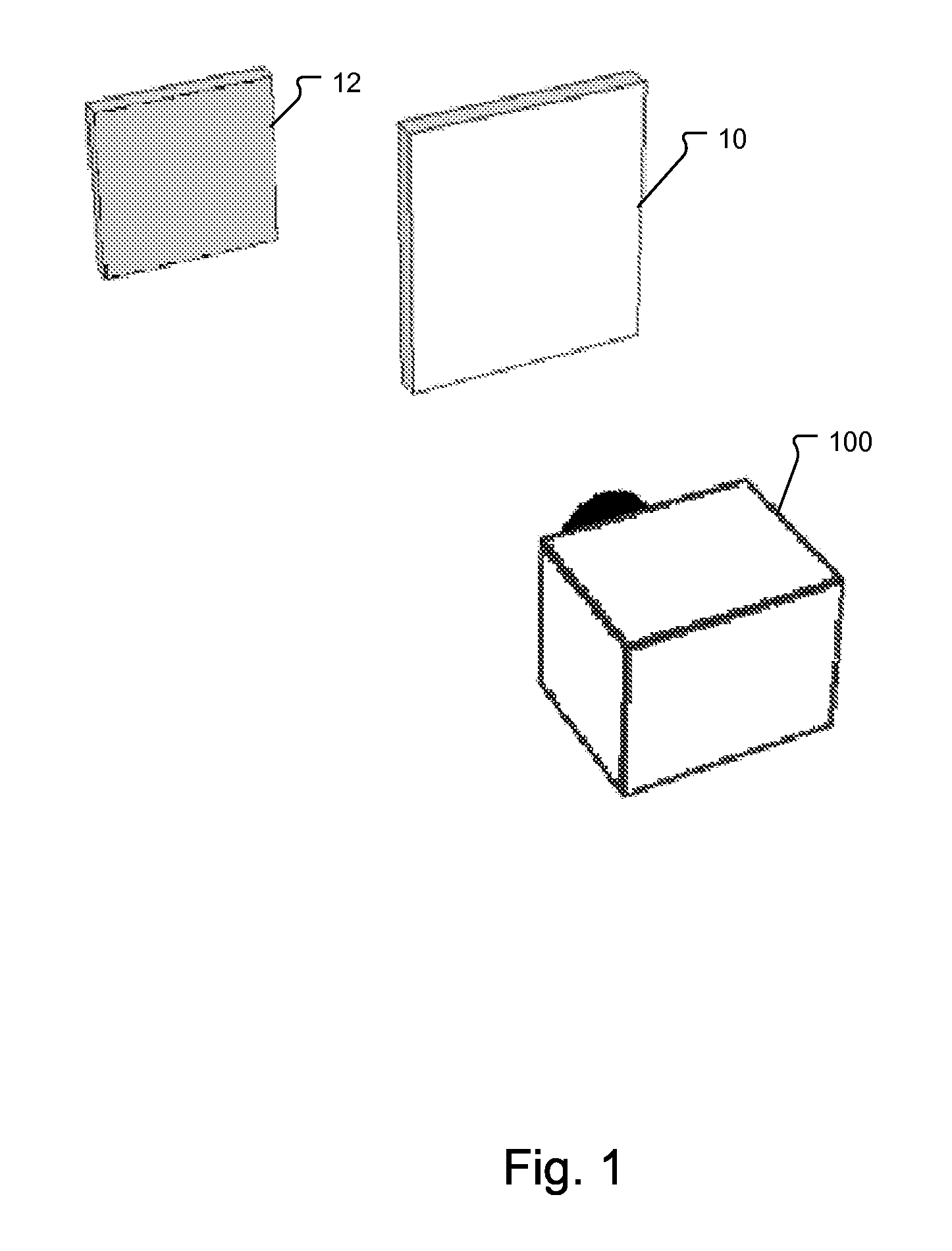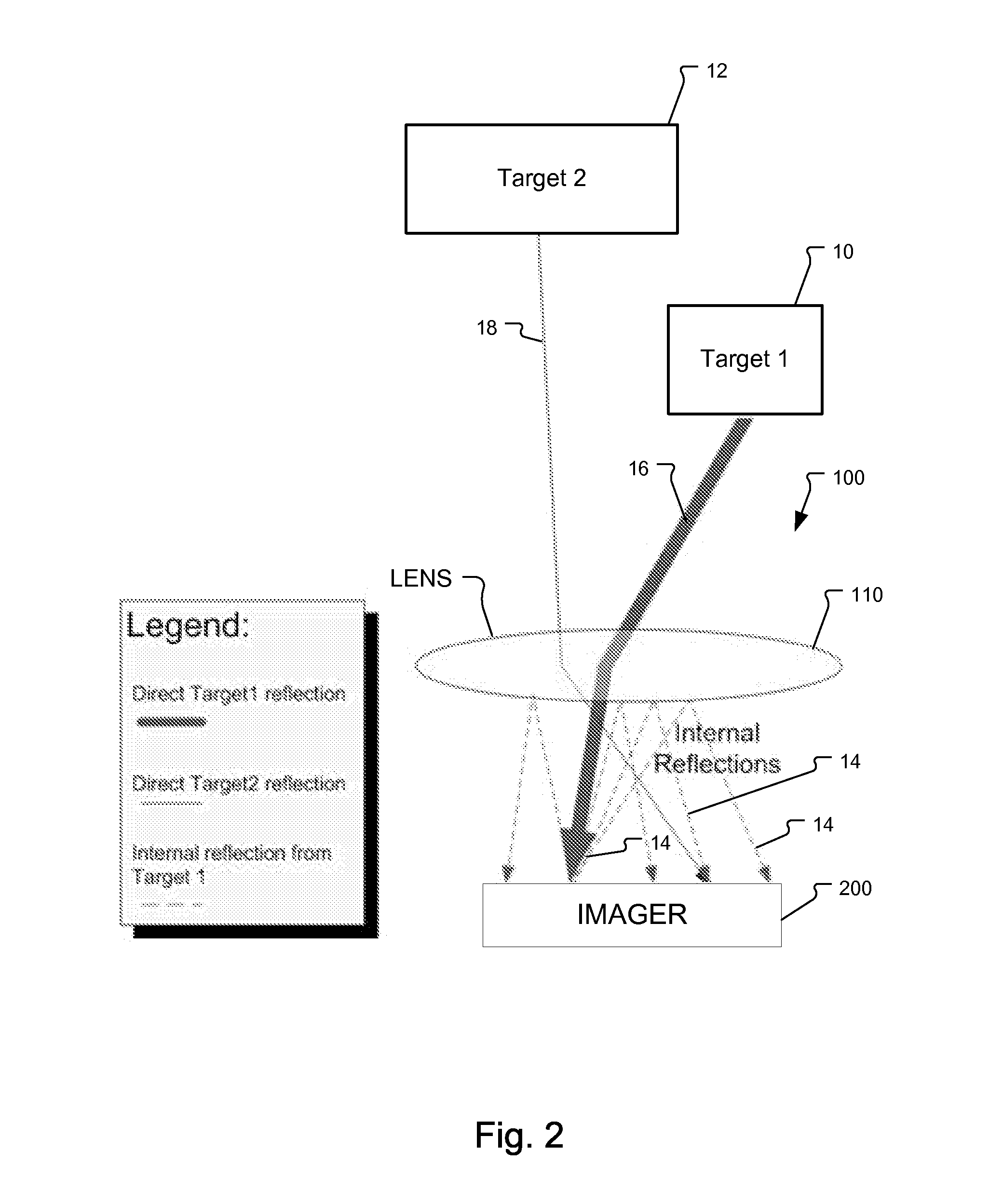Multi-Path Compensation Using Multiple Modulation Frequencies in Time of Flight Sensor
a technology of time flight sensor and modulation frequency, applied in the direction of electromagnetic wave reradiation, measurement device, instruments, etc., can solve the problems of stray light originating from the strong signal adding to the weak signal, and the sensor has to handle high dynamic rang
- Summary
- Abstract
- Description
- Claims
- Application Information
AI Technical Summary
Benefits of technology
Problems solved by technology
Method used
Image
Examples
Embodiment Construction
[0028]FIG. 4 illustrates the basic principle of a 3D-measurement camera system 100 based on a sensor 200 comprising a two dimensional array of the demodulation pixels 101.
[0029]Intensity modulated illumination light ML1A at a first modulation frequency from an illumination module or light source IM is sent to the object OB of a scene. A fraction of the total optical power sent out is reflected to the camera 100 and detected by the 3D imaging sensor 200 as reflected light ML2A.
[0030]Each pixel 101 of the sensor 200 is capable of demodulating the impinging light signal ML2 as described above.
[0031]A controller C regulates the timing of the camera 100 so that the demodulation is synchronous with the modulation of light ML1A of the light source IM. The phase values of all pixels correspond to the particular distance information of the corresponding point in the scene. The two-dimension gray scale image with the distance information is converted into a three-dimensional image by the cont...
PUM
 Login to View More
Login to View More Abstract
Description
Claims
Application Information
 Login to View More
Login to View More - R&D
- Intellectual Property
- Life Sciences
- Materials
- Tech Scout
- Unparalleled Data Quality
- Higher Quality Content
- 60% Fewer Hallucinations
Browse by: Latest US Patents, China's latest patents, Technical Efficacy Thesaurus, Application Domain, Technology Topic, Popular Technical Reports.
© 2025 PatSnap. All rights reserved.Legal|Privacy policy|Modern Slavery Act Transparency Statement|Sitemap|About US| Contact US: help@patsnap.com



